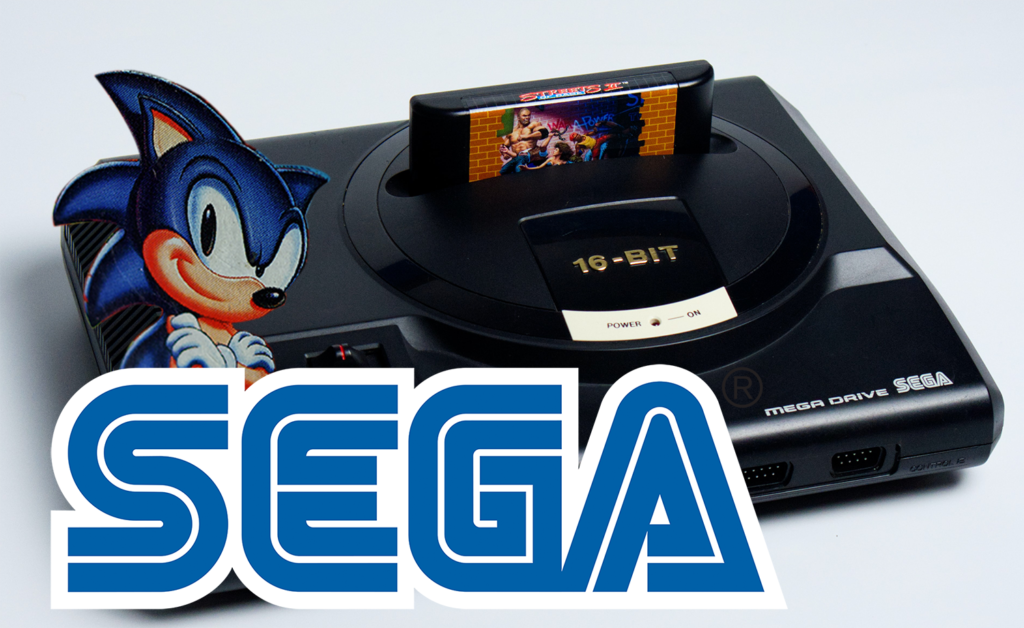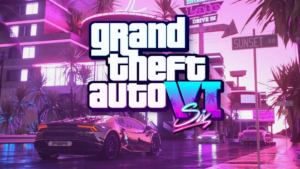Were you more Sega "Sonic" Megadrive or Super "Mario" Nintendo? The advantage of owning a FLEX-arcade terminal is that once Recalbox installed, you are really in a position to choose your queen console of the 16-bit era as a gourmet of retrogaming. While in adolescence, you blindly took sides for one or the other depending on the choice made by your parents at Christmas. At least that's the impression of someone who didn't own either of them, but listened to the debates sputtered above the bland vegetables of the cantoche. By the way, what was the Megadrive?
Content table
- Sega before the Megadrive
- Megadrive, retrogaming console of the future in 1990
- The unstoppable marketing of the cool outsider
- A few downright Megadrive games
- Sonic the Hedgehog (1991)
- Alladdin (1993)
- NBA Jam (1994)
- The Revenge of Shinobi (1989)
- Michael Jackson's Moonwalker (1991)
- Streets of Rage I, II and III (1991-1993)
- Megadrive Resources
The history of video game consoles is conventionally divided into "generations", or "eras". The first generation of consoles (1972-1980), the equivalent of prehistory, can be summed up in one word: "Pong". The second generation (1976-1983) can be summed up in one word: “Atari”. The third generation is the era of 8-bit consoles and can be summed up in one word: "Nintendo" (or "NES"). The fourth generation (1987-2000, or something like that), the 16-bit era, can be summed up in two consoles: the Super Nintendo and the Sega Megadrive.
At the time of this rivalry, I was unfamiliar with these “16-bit” stories other than silly age-worthy valves. On the other hand, “Super Nintendo” and “Megadrive”, that, I remember it.
I didn't understand much about it, but what I understood about it fits perfectly with what the story has retained: it was the "Console Wars", and many of my teenage contemporaries had chosen the side of the Blue Hedgehog.
Nintendo was good, okay, it was the industry boss, and for the parents and the little sister, it was perfect. Mario, Dunkey Kong, yeah, respect, we liked it too, Before. But for teenagers, the Megadrive was cool. It was speed and action, blood and fury. Sega was stronger than them. The brand has also made it clear.
1. Sega before the Megadrive
The front of the front: slot machines, photo booths, pinball machines
The company known today as Sega was American, then Japanese-American, then Japanese. In 1940, three Americans (Marty Bromely, Irving Bromberg and James Humpert) founded Standard Games in Hawaii. Their business: slot machines for American soldiers, which obviously works quite well. A little tour on Arcade-Museum.com ?
In 1951, a law prohibited the installation of one-armed bandits in barracks located on American territory, including of course Hawaii. It's the tile, but also an opportunity to see elsewhere if the grass is greener. In Japan, there are still plenty of American soldiers, so go to Japan. Standard Games became Service Games (hence Sega) in 1952. Service Games first imported slot machines the United States. Then it manufactures its own machines in Japan with the foundations of Nihon Goraku Bussan (distribution branch) and Nihon Kikai Seizou (manufacturing branch) in 1960. Before ending up exporting them all over the world. And it works well.
The company diversifies with jukeboxes and pinball machines. And with the first arcade terminals in the early 1960s, which began to hit the land of the Rising Sun (we have to fit in “land of the Rising Sun” at one time or another).
Another American entered the scene in the mid-1950s: David Rosen, who arrived in Japan as a soldier and remained there after his demobilization. His business: photo booths. And it works well. His company, Rosen Enterprises, branched out with jukeboxes and pinball machines. But especially with the first arcade terminals in the early 1960s, which began to hit the land of the Rising Sun (we had to relocate the land of the Rising Sun).
The two entities compete with each other, which must have seemed silly to them.
The Before: arcade cabinets
From the merger of Nihon Goraku Bussan and Rosen Enterprises, Sega Enterprises was born in 1965, headed by David Rosen. Sega will then mainly thrive in the field of arcade games, but you didn't need me to know that.
The first highly successful arcade machine produced by Sega was the famous Periscope (1966), which allows the player to control a submarine. Why "famous"? Of course, he has his own page Wikipedia ! If you are interested, the site SegaRetro.com offers no less than 65 pages devoted to “Electro-mechanical arcade games” of the same type as Periscope.
From 1972, Sega enters the era of electronics proper, and therefore of arcade video games. With success attested to by the fact that many other Sega arcade machines have their own Wikipedia pages, such as fonz, Heavyweight Champ, Monaco GP, Tranquilizer Game. Where head on. They make you dream, don't they?
The company builds and distributes arcade terminals, but also becomes a recognized game publisher, which is today the basis of its power (let's not be afraid of words). Classics like Frogger and turbo (1981 and 1981) were published by Sega and used on the first home consoles, Atari 2600 and ColeVision.
At the beginning of the 1980s, when you had a solid reputation as a manufacturer and publisher, there was a strong temptation to embark on the big business of the moment: the home console, precisely. And when the temptation is strong, what do you want? We succumb to it.
The Just Before: The Console Era
Sega released the SG-1000 in Japan on July 15, 1983, the same day as Nintendo's Famicom (called the NES here): we can therefore speak of head-on competition. The machine is only sold in Japan, unlike Sega's second 8-bit console, the MasterSystem, launched in 1986 to conquer the vast world.
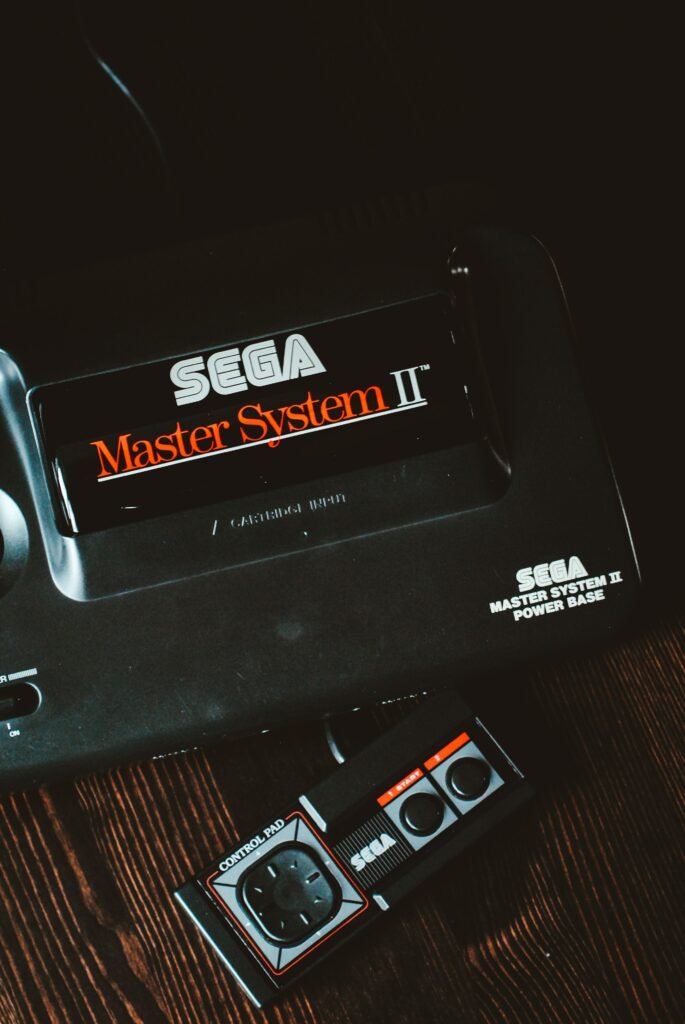
The overall commercial performance of the MasterSystem is appreciable: 13 million units sold worldwide. But the NES is sold about 62 million units. The 8-bit era is therefore for Nintendo. On the other hand, Sega has the honor of inaugurating the 16-bit era in 1988 two years ahead of its competitor (the Super Nintendo, or SNES, was released in 1990 in Japan). And here we are at Megadrive time.
2. Megadrive, retrogaming console of the future in 1990
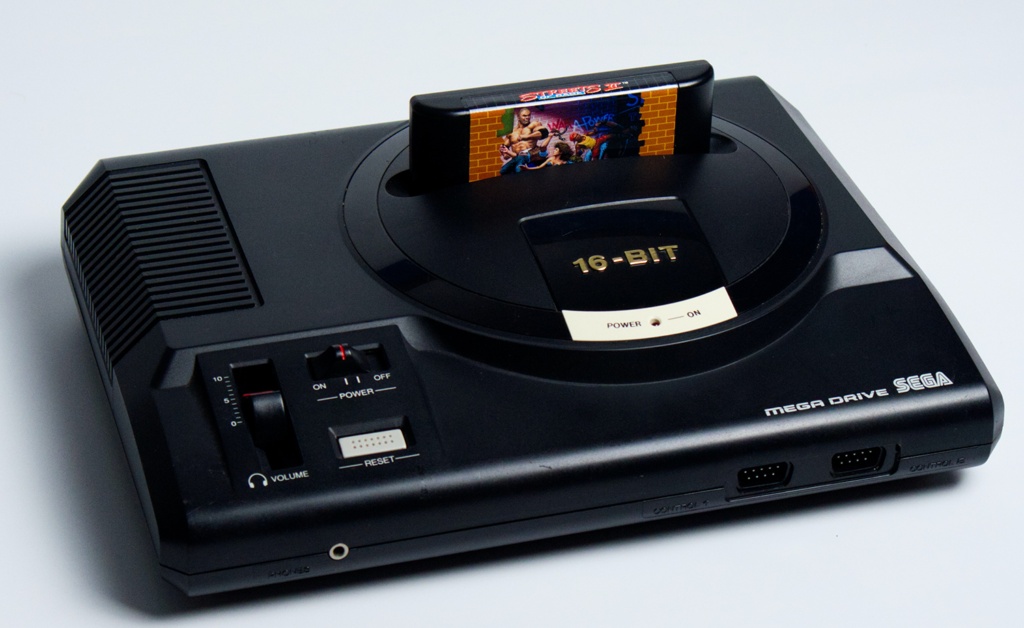
The Megadrive was released in October 1988 in Japan, August 1989 in the United States and November 1990 in Europe. In North America, it's called the Genesis, because another American computer company was already called Mega Drive Systems (yes, I asked a search engine).
Let's avoid the question of numbers: approximately 40 million Megadrives are sold worldwide (half in the United States), compared to approximately 49 million Super Nintendos (23 million in the United States). So there was a match, or rather a war. Nintendo wins the bet in Japan, where it only sells 3.5 million Megadrives against 17 million SNES.
Let's get rid of the question of the future: after the Megadrive, the console sector will be much less lucrative for Sega, which moreover dropped the deal in 2001 after the relative failure of the DreamCast (1998), which was nevertheless the first console 128- bits (112 bits more in ten years, it's just going by, huh?).
But in 1990, things were going fast for the Megadrive and Sega.
This design!
First, the console was black (it's elegant and it slims down the silhouette), all in curves (aerodynamics). And aim for the controller! All in curves too (to better negotiate turns). Later, there was even the 6-button controller, the one you had to have.

A race car. Better, a space shuttle. Besides, Nintendo was too "square", you can't really fly with this machine. Sega was high tech for gaming experts. Teenagers, then. The marketing argument was that everything went faster on the Megadrive, and that was logically reflected in the design. Frankly, it was a beautiful object, an object of the future.
Owls logos

The Sega logo hasn't changed, or marginally, since 1982, but in 1990, we discovered it. And it was really nice, with these roads printed in the letters that made you want to take them at full speed. And what about the Megadrive logo? A Formula 1 team logo. The future, we tell you.
3. The Bold Underdog's Unstoppable Marketing
I am well aware of throwing myself headlong down the slippery slope leading to the open door, but the wars between two dominant brands are always the same thing: the leader pretends never to look behind him while the challenger shows the muscles and always refers to the leader. So it was Sega who was doing the show, with talent.
The best ads

The fight against Nintendo was staged more visibly in the United States, where comparative advertising is permitted. This spawned the "Genesis does what Nintendon't" campaign. In France, this spawned the “Sega, it's stronger than you” campaign, openly focused on challenge, speed and modernity. Everyone knows her, it's proof that it was great (see resources at the end of the article).
I don't remember the Nintendo campaigns at all, though. There must have been a plumber and mushrooms, I imagine. Cute stuff.
The throwing mascot
Sonic is a blue hedgehog who doesn't really look like a hedgehog (that, thorns? Eggman has a mustache with thorns, but Sonic doesn't). If we hadn't called it “hedghog”… There's the muzzle, that's true. Still, it goes very fast and defies centrifugal force. It bears the color of the brand. So, we've done the trick. Is there really enough to found an empire extending from video games to comics via cinema and television?


Sega needed a mascot to oppose Mario. This role was planned for Alex Kidd, hero of the Alex Kidd in Miracle World (1986). But he wasn't great. Besides, if I don't show you pictures of him, would you be able to describe him? (I won't show photos.) So Sega created another one, with brand colors and specs exactly matching the Megadrive's supposed qualities: the speed and fluidity of its games. And it is true that at the time, we had the impression of seeing something really new (the speed, and the loops above all) while playing sonic, and moreover we talked about it while playing, as if to participate in a moment in the history of video games. Naive reviews? I am reassured to see that this is how we present sonic still today.
The first game Sonic the Hedgehog was released worldwide in the summer of 1991, just in time to counterbalance the release of the Super Nintendo. The game was offered with the purchase of the console, and some comrades dutifully passed on Sega's marketing argument to the real decision-maker in terms of end-of-year gifts: Santa Claus.
Real blood, in real pixels!

The game mortal kombat triumphed on an arcade machine, partly because it was great (I played it!), partly because we saw very thick blood and mortally fatal "fatalities" in it (I saw the column vertebral!). The console versions were therefore highly anticipated. However, the arcade version causing a scandal, the game appeared on SNES and Megadrive in watered down versions. But on Megadrive, it was possible to find blood and fatalities provided you enter the "secret" code at the start of the game. This great little story inevitably tipped the debates in the canteen in favor of Sega, the company of the audacity and creativity.
Many teenage urban legends served to promote the creative and daring side of Sega. One day, someone (well, he must have been 10 years old) explained to me very seriously that Sega had been founded by ex-Nintendos who were unhappy with their lack of creative freedom. Probably a misunderstood article. Moreover, there should be no shortage of stories of employee transfers between Nintendo and Sega.
All that, of course, was a lot of marketing. But when it comes to games, what's left of the Megadrive?
4. A few downright Megadrive games
With the existence of bounds like those of FLEX-arcade, it is possible to replay 8000 video games in all possible versions. Suddenly, I remembered the games that we spontaneously associate with the Megadrive, even if I hadn't necessarily played them.
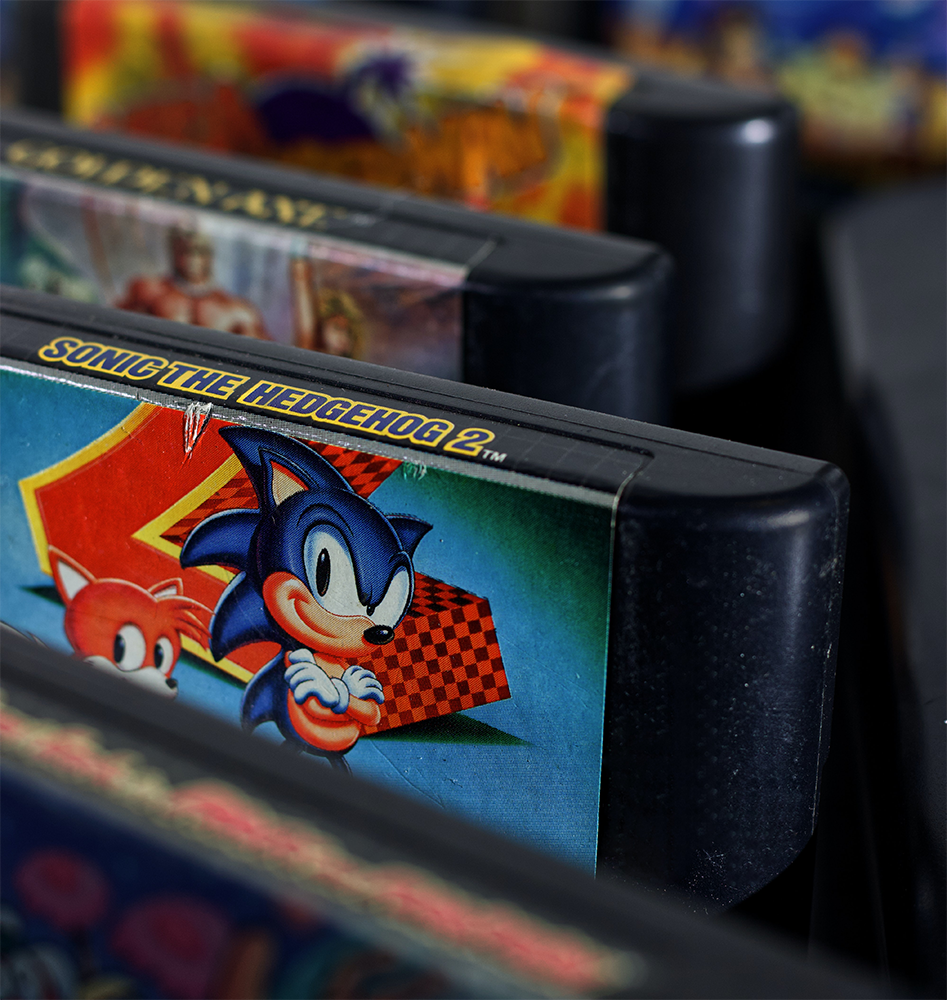
Sonic the Hedgehog (1991)
It's always so good, the loops. One aspect of the game that I really like is blue. I find it magnificent. Ok, it's the color of Sonic and therefore of Sega, but does this completely explain it? When experts compare the Megadrive and the SNES with hindsight, one aspect keeps coming back: the latter had a wider color palette. It never particularly struck me, maybe because it didn't interest me that much, or maybe that flaw was just glossed over for the better games. The Megadrive is the blue console.
Alladdin (1993)
I had never played it, but it is one of the highest rated Megadrive games in the world. I haven't seen the movie either, mind you. I'm not too Disney so suspicious I was.
I don't like being jostled in my certainties, and it is therefore with great regret that I must say that it's great. A real animated film, with noises, pretty colors, fluid movements. Like what it's worth discovering certain works forty years later. And there's blue, it looks like a dream.
NBA Jam (1994)
When I was a teenager, one of the big selling points for the Megadrive was sports games. It offered more, which fit well with its brand image. Does sport hold up in retrogaming? That would be the subject of an article in itself. There is always that NBA Jams, which I did not know but which was held in high esteem when it was released, is really great! Especially since it offers pure arcade pleasure that the (wonderful) simulations of now no longer allow: disregard the laws of gravity (and the rules of basketball) by countering shots at 4m altitude with a ball in the downward phase. I'm not even talking about the stratospheric dunks and violent fouls.
The Revenge of Shinobi (1989)

A middle school friend was mimicking shuriken throwing while shouting "Shinobi!" ". It took me a very long time to understand where he was coming from. Now, I mime throwing shuriken very well myself. It's the cream of ninja games, indeed. The appearances of Schwarzenegger/Terminator, Spiderman, Batman or Godzilla alone are worth seeing.
Michael Jackson's Moonwalker (1991)
We had to try because it is a game specifically Sega and specifically Michael. It's very funny and it's still very original: we still embody Michael Jackson who fights while dancing and saves children (no comments). The game nevertheless arouses less interest beyond twenty minutes. It's very repetitive. But wasn't that already the case back then?
The music isn't bad.
Streets of Rage I, II and III (1991-1993)
In fact, that's what I was looking for. Because I had never played Streets of Rage and I always knew that was missing in my life. And because it is a series specifically cataloged Megadrive and referenced in the top of the top of the beat them all. Three years, three games, that's called striking the iron while it's hot. The principle: we choose one character out of the 3 (or 4 in II and III) and we follow a scenario that should lead us to beat everyone up. It was really missing in my life.
As you might expect, the graphics improve greatly over the games. I tend to think that the II and the III are very comparable in excellence, but that's obviously a stupid opinion, because it's the II that entered the pantheon of video games. Streets of Rage I is less fluid, of course, but this is compensated by excellent gameplay (an expression that I do not use lightly, believe me, because it took me years to understand it. Kind of like “you have to it is aerated” for wine).
Best: play all three in a row!
If we measure the quality of the Megadrive at Streets of Rage, I now understand better the enthusiasm of my school friends for this legendary console.
5. Resources on Megadrive and Console Wars
- Ads, of course! The legendary French Sega campaign (and moreover specifically French) on the YouTube channel Retrojeux. And the American campaigns for Genesis on the PixelSlayers channel.
- An interview with Blake J. Harris, author of the book Console Wars: Sega, Nintendo and the battle that defined a generation, published in 2014, on the YouTube channel Lon.TV. Before reading the book, perhaps? On YouTube, there are many documents on the Console Wars, here is a fairly long and complete one, but all in English, on the channel Double Dog.
- Sega Genesis vs. Super Nintendo – SNES vs. GENESIS , a double episode of the excellent Angry Video Game Nerd (on Cinemassacre).

